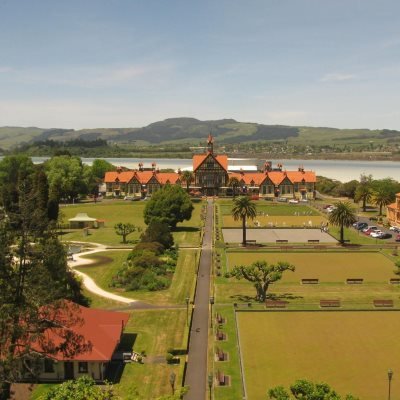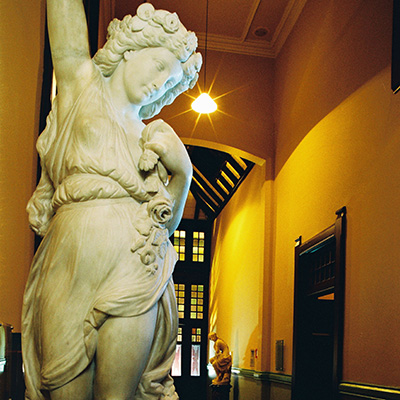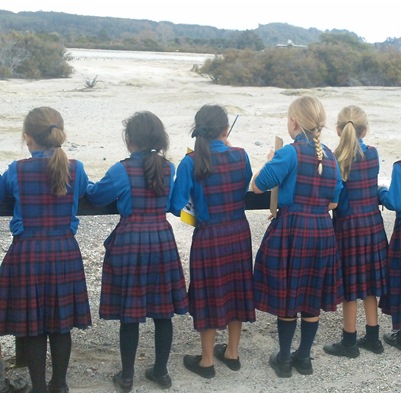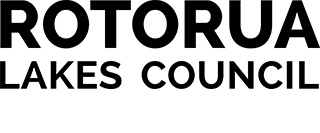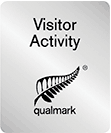Catch up with the Curator: Margaret Aull, Taonga Gallery and Tuku Iho Collection Curator
Monday, 12 March 2018
We’re excited to kick off the first Catch up with the Curator blog for 2018. This week Rotorua Museum’s Lead Exhibitions Curator, Ane Tonga, caught up with esteemed artist and curator Margaret Aull (Te Rarawa, Tūwharetoa, Fiji). Margaret is an established artist who has exhibited her artwork nationally and internationally, and comes to Rotorua from her former role as the Te Poutiaki Toi – Art Collection Curator at Te Wānanga o Aotearoa (TWoA) in Te Awamutu . We were delighted to learn that Margaret was recently appointed as the Taonga Gallery and Tuku Iho Collection Curator at the New Zealand Māori Arts and Craft Institute (NZMACI) located at Te Puia. Read on to learn about her journey, the recently opened wānanga (school) for whakairo (carving) and raranga (weaving), as well as the new Āhua Gallery which is due to open in May.
Ane Tonga (AT): Firstly, congratulations on the recent appointment as Taonga Gallery and Tuku Iho Collection Curator! How long have you been in the role?
Margaret Aull (MA): Since November and it’s been crazy and exciting…
AT: Very exciting indeed! Even before you started, the advertisement for a curator at Te Puia sparked excitement across the country and indicated that significant changes were happening at the organisation. These changes, like so many others that stem from Te Puia, will go on to shape the way we see and understand Māori arts. What excited you about this role?
MA: This was particularly exciting because of the travelling exhibition Tuku Iho that has been done so successfully. I also knew of the legacy of Tā Āpirana Ngata and Hone Taiapa and their contribution to the school and our art history. So word on the street, they were doing some exciting things!! I was also very interested in Te Puia/NZMACI finding a successful model of promoting Māori to the world using toi (collection) as the vehicle. Being part of a legacy born from whakairo (carving) was familiar and the opportunity to work with an amazing team made it easy to put my hand up to be considered.
AT: Are there any highlights of the job so far?
MA: The ability to work in a place that remembers its history and celebrates our art as a form of identity and educational importance is special. Also opening of the new wānanga – to understand that
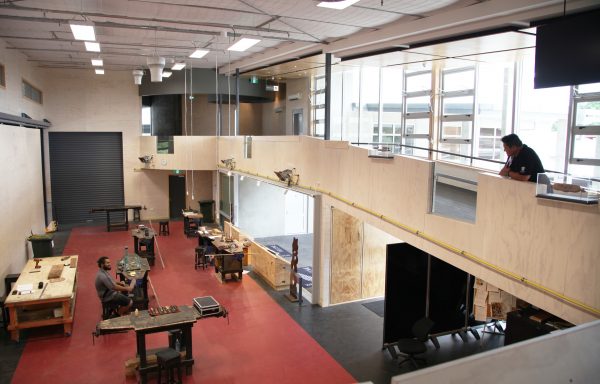
NZMACI wānanga. Photo courtesy: Ane Tonga
AT: Equally as special is your curatorial trajectory which is grounded in two of the leading tertiary institutions- Te Wānanga and now Te Puia. I’m interested to know, what does curating mean to you?
MA: For me a curator is about bringing people together through an idea and, in roles like this, it is being a kaitiaki of the organisation’s visual history. NZMACI was born out of a resistance to letting our art forms die – and as a result, it is a legislative act. This organisation has had the backing and mana of kaumātua from the very beginning. I believe our Māori visual art is just as important as our reo. It is a vocabulary that is embedded in knowledge and practice. So I believe my role is to ensure that people understand that it has the same mana. All I am here to do is to help make sure there is a continuum and we are able to perpetuate our culture through nga mahi toi.
AT: I’m going to prod again, but only because you’ve got such an interesting background to unpack. People like you, who operate as both an artist and curator, bring for a unique approach to any curatorial role. What inspired you to become a curator?
MA: I’ve always found it weird or difficult to call myself a curator, because the roles I have been involved with are loaded and broader in responsibilities – particularly when working for Māori organisations where you project manage, advise on marketing and brand campaigns, curate sites, develop opportunities and relationships whilst having at the very core of it, a collection to care for and develop. I started at Te Wānanga o Aotearoa as the art catalyst and went on to become the registrar, then the role was revised as the curator of the collection. I was there for nine years and took care of a national collection, acquired works, catalogued and curated the sites to strongly reflect its values and character.
So back to the question…LOL … I never planned to be this. I was asked by many to help build an “inventory”…10 years later I am called a curator!
AT: Maybe it’s not so much a coincidence but, instead, part of a plan that was put in place for you by a network of elders and people from your community? With that, I’m going ask you what Sean Mallon (Senior Curator Pacific Cultures, Te Papa) asked me: who said that you can curate?
MA: Yes… Pairing it back – my first internship was with the awesome Leafa Wilson who showed me what type of relationships and planning was needed, including working with collections. I was then offered the role in TWoA and before I knew it I was at the table with iwi leaders – a little buck weed at a table full of people I admired and respected. I have been fortunate enough to have many mentors during my years. I suppose looking back at it – ie: a very naïve Arts graduate – they empowered me to make decisions and trusted me to do the role to the best of my ability. They were very value driven I learnt ways of practicing this. I got a couple of clips around the ears…hahaha…just a few…you learn and carry on. It was a magic time during those early years and I’ve made lifelong friendships through this type of role. I don’t think you can do a role like this without community and the backing of the people that you serve.
AT: Absolutely and that brings to mind what Leafa often says “curating is a service”. Perhaps this perception is distinct to particular regions. People often say that curating in the regions is a world of its own, but even more so in Rotorua as the birth place of tourism. Tourism is articulated in very different ways. And Te Puia has, what I believe, is a unique and ethical approach that marries the celebration and perpetuation of Māori culture, tourism and wānanga. Can you speak to this?
MA: Te Puia/NZMACI was an amazing reveal in terms of a successful business model where tourism funds education. We aren’t government funded, we aren’t part of NZQA, we set our own measures and outcomes and we pay our students to study the art (no student loan for our people), in whakairo, raranga, bone and stone. Students with the skill and ability apply and are selected carefully to disseminate the cultural knowledge and responsibility in their own iwi and communities…it’s quite special.
We are soon to introduce tā moko alongside the new Āhua Gallery and already have a foundry (bronze casting) on site. There has been millions of dollars invested into the wānanga, future proofing it as a school of excellence. These are state of the art rooms, tools and the only custom-made workshop for whakairo.
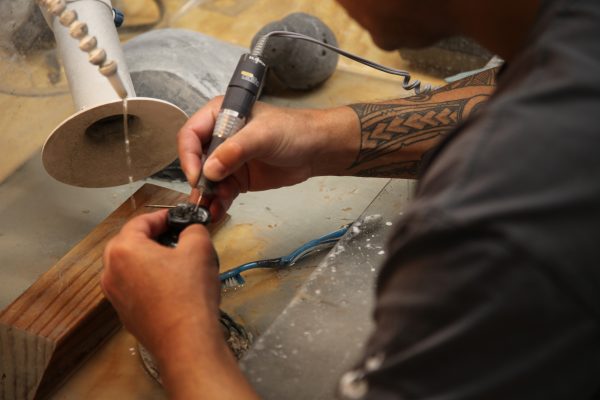
Photo courtesy: Ane Tonga
AT: How exciting! And ambitious! There are so many forward thinking projects formulated at Te Puia. What is it that makes Te Puia so special?
MA: What’s unique is that it’s Māori owned and people are paid to be who we are – Māori! We are paid for our skills and expertise as guides, performers, artists and teachers. What I have seen as the underlying thread is that it’s more than just a job and working here means that you become part of this place and its large history. There are people that have been here for three generations or more. It is a legacy space – this is what tino rangatiratanga can look like . This is the “so special” part: educational excellence, financial independence and agility as a business to develop opportunities.
AT: What do we have to look forward to at Te Puia?
MA: The new Āhua Gallery will create a direct platform for students to showcase their work. It’s already changed the way that we view and value. Taonga that comes from NZMACI is finding its way into collections. From private collections to national museum collections like Te Papa and cities as far away as Belgium. We have new tā moko space opening as well as the new VIP Te Taki Lounge that will provide a new experience for collectors and buyers purchasing high quality works. I am interested in building a Māori creative economy. Āhua will be an opportunity for us to celebrate our tauira artistic achievements and extend the conversation of Māori art with our graduates and community.
 LEAD EXHIBITIONS CURATOR – ANE TONGA
LEAD EXHIBITIONS CURATOR – ANE TONGA
Ane Tonga
Email


